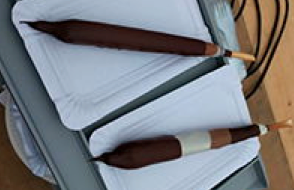Orienteering is a typical Jungschart activity. Jungschartechnik (map reading), sporting activity and nature enjoyment are combined here in an ideal way. Here we explain what you have to consider when preparing an orienteering run
10 rules for the preparation of the OL's
- Take enough time for the preparation! The success of an OL's stands and falls with the track laying. That's why this work cannot be done quickly half an hour before the start of the Jungscharn afternoon.
- The length of the sections must be adapted to the ability of the participants. Short sections for beginners, longer sections for advanced. However, the distances should only be longer than 500 m as an exception.
- Each run must start easy: Short sections, easy postcard locations. On the one hand, each runner must first get used to map work and this happens on the first two legs. On the other hand, a sense of achievement at the beginning is very important: orientation errors in the further course of the race are easier to cope with.
- Similarly, the last two legs should be easy. The expectation of the near finish and the mental and physical fatigue of the runners complicates the map work immensely.
- So the difficult routes should be built in the middle of the run. But there they should really put route selectors: i.e. the runner should have the choice between longer, safe routes and shorter, difficult routes.
- Avoid dead ends. Posts with the same approach and return route are to be avoided, especially in group competitions.
- Post locations must be clearly determinable by two criteria.
- Orienteering is not a game of hide and seek. Once a runner has reached the immediate post area, the post must also be visible. It is discouraging to lose the time gained looking for the hidden post sheet after a well run partial distance.
- For compelling sections, posts should be set accordingly. Those who set posts in this way should not be surprised if the young warriors cross the railway line or trample the cornfield.
- The forest is not a gymnasium. Take plants and animals into consideration (protected areas, setting times).
Source Notes
Cover photo: Juropa Archive, www.juropa.net
Content from the book: Jungscharleiternachrichten, Die besten Tipps - der 80er Jahre, Auflage 600.3.90 © BESJ-Verlag, Fällanden, page 57-58, Martin Weidmann
Content may be automatically translated. Help improve the quality of the translation with your editing!


